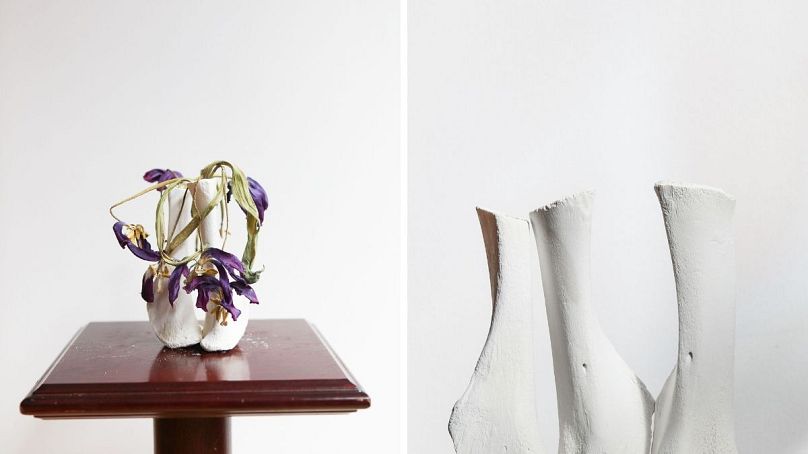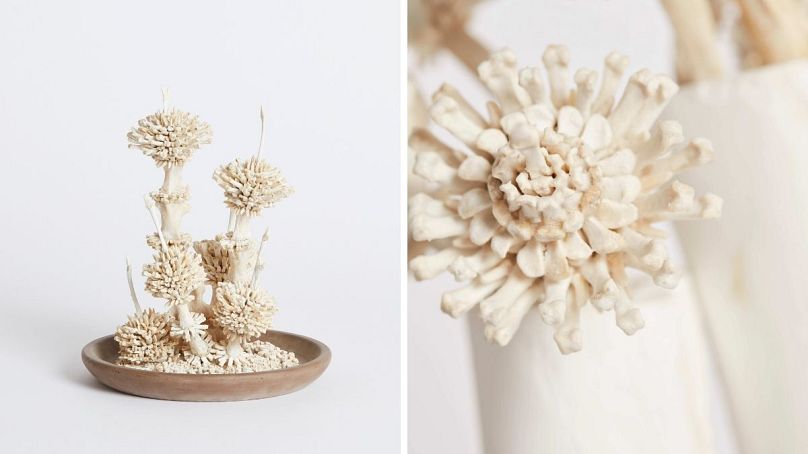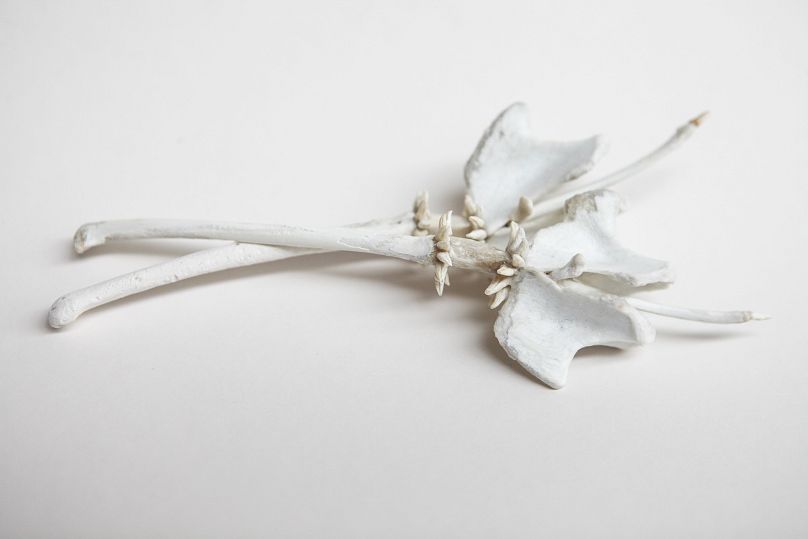Emma Witter educates us about food waste with her upcycled bone sculptures.
Intricate, pure, and delicately ethereal, Emma Witter’s art is striking for more reasons than one. Assembled from bleached bones ranging in different sizes, her unique sculptures focus on the flower motif. Witter painstakingly pieces together tiny animal bones in order to create Witter’s hauntingly beautiful sculptures, which juxtapose the flower, representing life, fertility and beauty, with something traditionally synonymous with decay and death.
Bones alongside flowers have held a longstanding function within art history, specifically in the subject matter of 16th and 17th century Flemish artists. A skull signifies the Memento Mori, the Latin phrase delineating a reflection on the mortality of man and the transience of earthly dwelling. The artist playfully references this in her bone vase pieces, by transforming pig shin bones into empty vessels which cradle dying flowers. However, Witter’s work is not morbid, the nature-themed pieces instead challenge our expectations of beauty, while breathing life back into the bones, giving them new purpose.
Emma Witter, supported by the Sarabande Foundation, founded by Alexander McQueen, provokes a contemplative silence in the viewer. We’ve seen artists use plastic to create life-like sculptures, but Witter’s innovative use of bone matter is definitely something new. Drawing attention to the substantial amount of restaurant waste plaguing the food industry, the artist’s upcycling of waste products sees her reinscribe discarded debris into something beautiful, thought-provoking, and worth holding onto: rubbish is reinvented; from forgotten object to prized possession.
According to Wrap, the food sector produces 0.4 million tonnes of avoidable food waste annually. Indeed, Witter’s raw materials are collected from her own consumption and detritus from friends, chefs, butchers - she even scours the shores of the Thames in order to ensure that she has a range of different bones in order to complete her sculptures.
Last year the artist showcased a work entitled “BLOOM”, during her three-month artist residency at Mark Hix’s Tramshed, in London’s trendy East end, Shoreditch. On site, Witter had an abundant supply of bones, collected conveniently from the kitchen where she could boil them, followed by the ritualistic process of cleaning, bleaching and drying them, and finally categorising them in size and type for ease. The artist’s painstaking method emphasises and injects new importance into her process and elevates the salvaged materials into a permanent piece of artwork.
Championing the reclaimed, Emma Witter’s sustainable art is incredibly inspiring and didactic, as she draws attention to our landfill problem through an engaging and beautiful medium. Be sure to look out for her newest exhibition, “Remember We Die”, at the Sarabande Foundation from the 18th - 22nd of September 2019.
Words by: Kiltie De Cleyn














